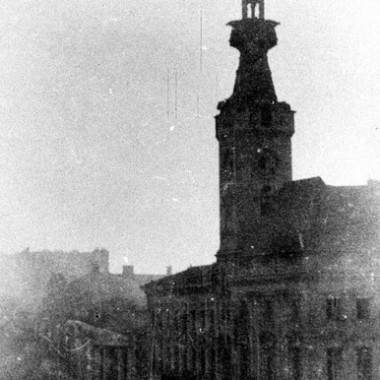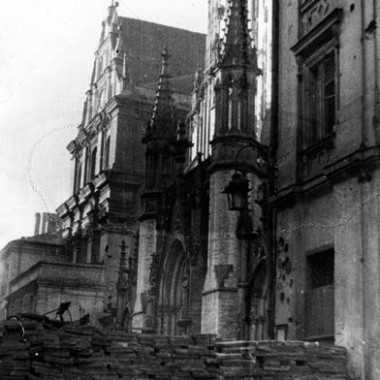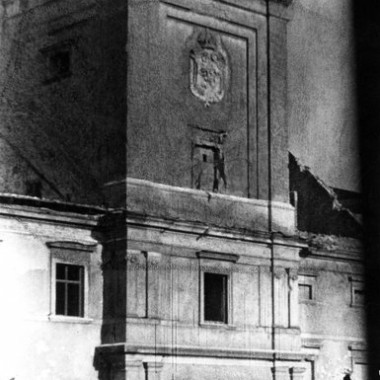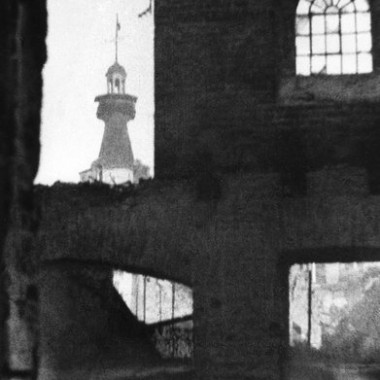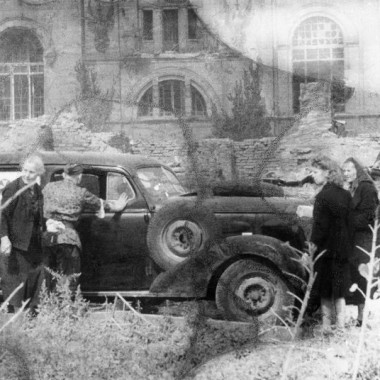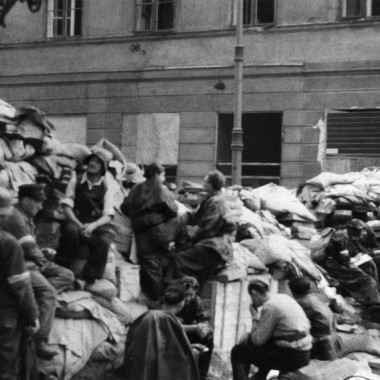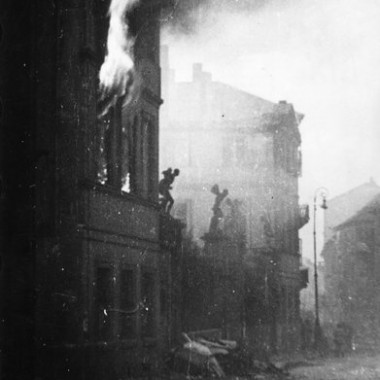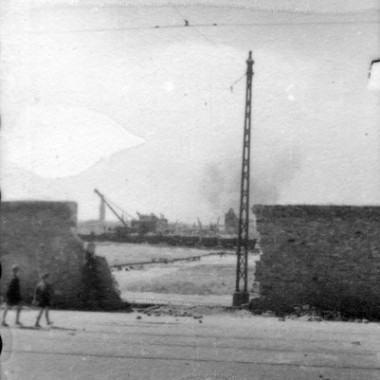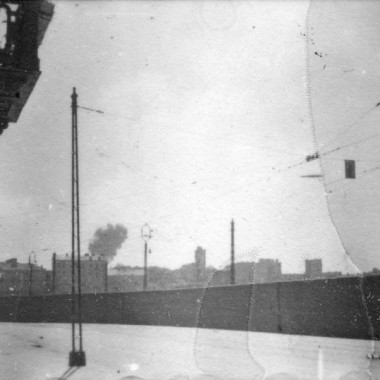Lt. Józef Jerzy Karpiński was born in 1911 in Ignaców near Grójec. Before the war, he studied chemistry at Stefan Batory University in Vilnius, and later lived and worked in Warsaw. In 1939, he took part in the civil defence of Warsaw. During the occupation, despite the ban on photography, he made efforts to document everyday life of the city. Arrested for photographing the bombarded railway tracks in the area of Towarowa Street in 1941, he spent 4 months in the Pawiak prison. Thanks to the efforts of his family, he was bailed and released. He hid around the city until 1944, and continued his photographic documentation. During the Rising, he was an officer at “Północ” Group’s disposal, organisationally attached to the W. Łukasiński Battalion. Captured by the Germans, he left the city with the civilian, miraculously escaping execution by the Ukrainians in Chłodna Street. In the transfer camp in Pruszków, he was qualified as “seriously ill” and sent to a hospital in Milanówek. He escaped during the journey, and hid in his family’s home in Błędów near Grójec until the end of the occupation. After the war, he continued his education at the Diplomatic and Consular Department of the Reyman Academy of Political Studies (a private school), and collaborated with the editors of “Służba Zdrowia” (“Health Service”) magazine. He later worked at the Physics Institute of the Warsaw University, and the Food and Nutrition Institute. He continued amateur photography. A passionate lover of motors and motorsports, he was one of the founders of the AZS (University Sport Association) Motor Section at the Warsaw University of Technology. He died in 2010 in Warsaw.
Operating under the pseudonym “Jerzy” during the Rising, Karpiński photographed the life of fighting Old Town. Right before the fall of the Old Town, he made efforts to hide his photographic materials in the rubble at Długa Street, finding them upon his return to Warsaw in winter 1945. Hidden in a pile of bricks, the small suitcase filled with materials documenting the German occupation and Uprising, as well as a Leica Standard camera, perished in the fire. The sole survivor was a metal tin can holding six negative rolls, hidden behind a water pipe at 12 Franciszkańska Street, where he was billeted with his unit. The collection is complemented by negatives documenting a trip to Lviv before the outbreak of the war, post-war documentation of ruined Warsaw, and snapshots of AZS Motors Section activities.






